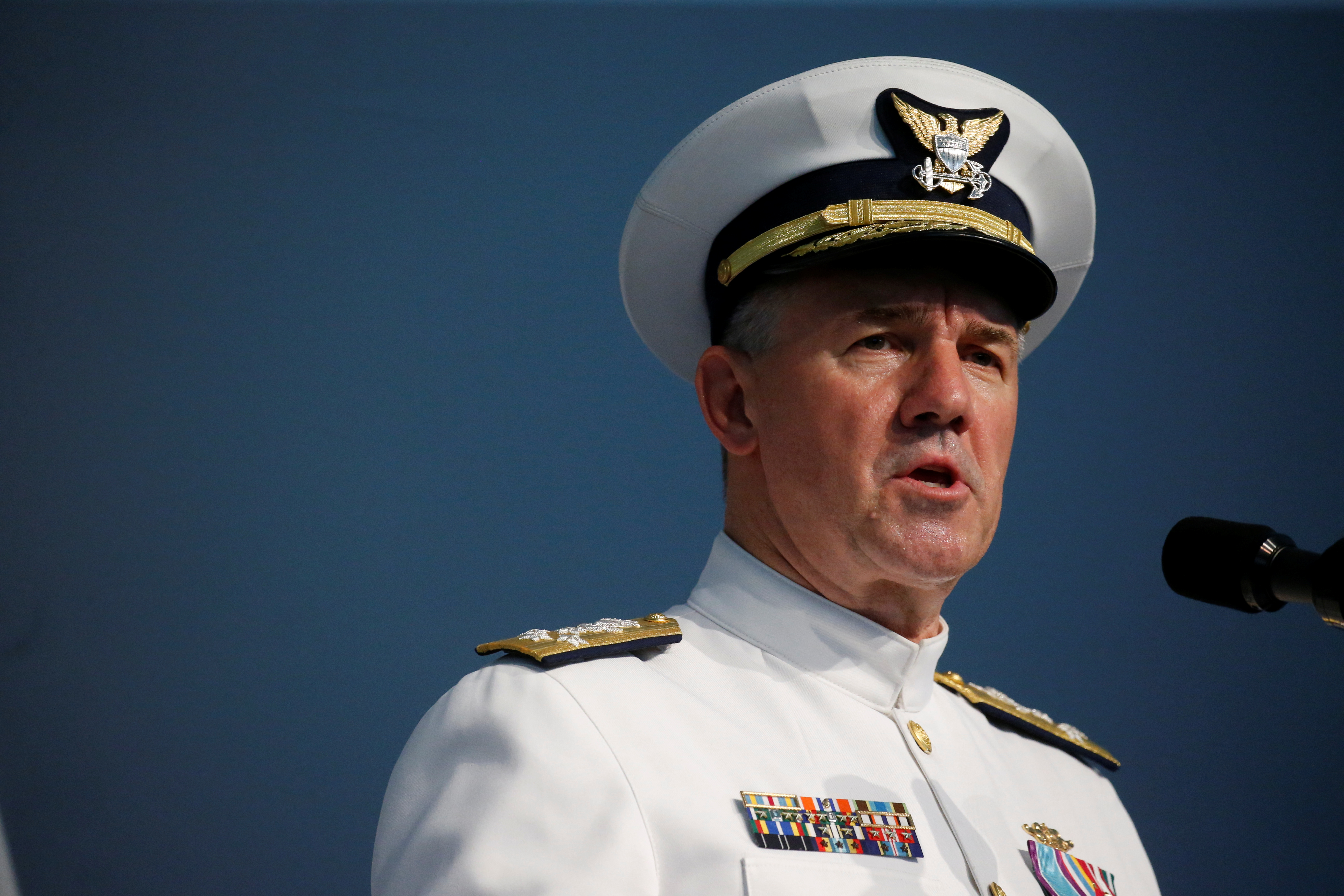U.S. Coast Guard will broaden Arctic focus to include European Arctic, commandant says
Adm. Karl Schultz said the Coast Guard is looking beyond Alaska — and that the Northern Sea Route could become the next disputed maritime region.

In Washington on Tuesday, Adm. Karl Schultz, commandant of the U.S. Coast Guard, spoke about the military service’s maritime strategy — and the Arctic frequently took center stage.
“We know what the Arctic is now,” Schultz said at an event with the Center for Strategic and International Studies. “And we’re up there trying to figure out how do we operate, how do we project sovereign presence, why are we up there?”
In his remarks, he focused more on the European Arctic than he has in the past.
“We’ve been very Alaska Arctic-focused,” he said. “I think we’re broadening our aperture really across from the high latitudes into the Atlantic Ocean.”
The Coast Guard plans to increase its presence through the Coast Guard Arctic Forum and by partnering with other military services, such as the U.S. Navy’s recently revived 2nd Fleet, and international partners, like the Canadian Coast Guard.
The reason, in part, is because several key allies — Canada, Denmark, Norway — are located in and focused on the European Arctic, Schultz said.
Last week, he said, he visited Greenland, and they expressed concerns about Russian activity off of their coasts. Schultz also raised his own concerns in Washington, pointing out that Russia is tripling its icebreaker investments and courting international shippers, particularly from Asia, to use the Northern Sea Route.
“That could be pretty lucrative,” Schultz said. “I think the potential future disputed maritime region might be in that Northern Sea Route” — rather than, for instance, the currently disputed South China Sea.
Last December, the secretary of the Navy, Richard Spencer, said that the U.S. Navy should lead freedom of navigation operations in the Arctic to make it clear that the United States disputes other countries’ claims on Arctic seaways. “We need to be doing FONOPS in the northwest — in the northern passage,” Spencer said. It wasn’t clear whether he was talking about the Northwest Passage or the Northern Sea Route.
But in July, Rear Adm. Thomas Marotta, the reserve assistant deputy chief of naval operations, plans and strategy, confirmed that a potential FONOPS in the region would be in response to Russia’s Northern Sea Route requirements.
“If the Russians didn’t, in March, send out a requirement that you needed to notify them 45 days in advance, put one of their pilots on your ship, and give them the exact route that you’re taking, there’d probably be no conflict in the Arctic,” Marotta said at a symposium in Washington, D.C. (Disclosure: I moderated a separate event at this symposium.)
“If we build out this fleet, that might be the United States with a heavy role there,” Schultz said on Tuesday. “Even though it’s sort of in our European Arctic partners’ backyard.”
The Coast Guard has faced challenges in recapitalizing its fleet, however. In April, the service finally awarded a contract for the first new heavy icebreaker, known as a polar security cutter, in four decades. Although the contract with VT Halter includes the possibility of building two additional vessels, the funding for them has not yet been procured. Schultz said earlier this year that he plans to ask for it in next year’s budget.
Schultz remains optimistic that the momentum on icebreaker funding will continue to propel their recapitalization forward. “The conversation now is not about the first polar security cutter, but how fast can we build additional cutters,” he said.
Specifically, he spoke of the possibility of funding for medium icebreakers. Previously, it was thought that the next two vessels would be heavy icebreakers, since the VT Halter design and construction of one existing heavy icebreaker would offer economies of scale. It is possible that this plan would change, or that Schultz is already looking beyond these three heavy icebreakers.
He also highlighted the capabilities of non-ice-hardened ships to navigate increasingly ice-free areas. The Coast Guard’s national security cutter, Schultz said, has patrolled “on the fringes of the Arctic Circle” in times of less extreme weather.
Last year, the Coast Guard was included in the partial U.S. government shutdown — the first time a U.S. military service was shut down, Schultz noted. Coast Guard servicemen and women continued performing essential functions without pay for more than a month of the shutdown, but “that rocked us,” Schultz said. This year, the Department of Defense received its full budget on October 1, but the Department of Homeland Security — of which the U.S. Coast Guard is a part — has not. It is now operating under a continuing resolution until November 21.
“We’ll see where we go here in the coming weeks,” Schultz said. The budget uncertainty was unlikely to affect future funding initiatives, he said, unless it drags on — as it did last year.
The Coast Guard has had some success in procuring funding, however, when it portrays the Arctic in terms of national security threats and great power competitions with both Russia and China.
“China has been up there 5 [or] 6 of the last 9 years,” Schultz said on Tuesday. “They’re going to really potentially outpace us on icebreaking-capable ships here by 2025 if we don’t keep our foot on the gas.”
Despite continuing the Trump administration’s rhetoric against Russia and China, Schultz highlighted the importance of international partnerships — especially in places like Greenland and Canada.
For instance, the secretary of the Navy has raised the possibility of a joint U.S. Navy transit of the Northwest Passage with the U.S. and Canadian Coast Guards, Schultz said. “That’s intriguing.”